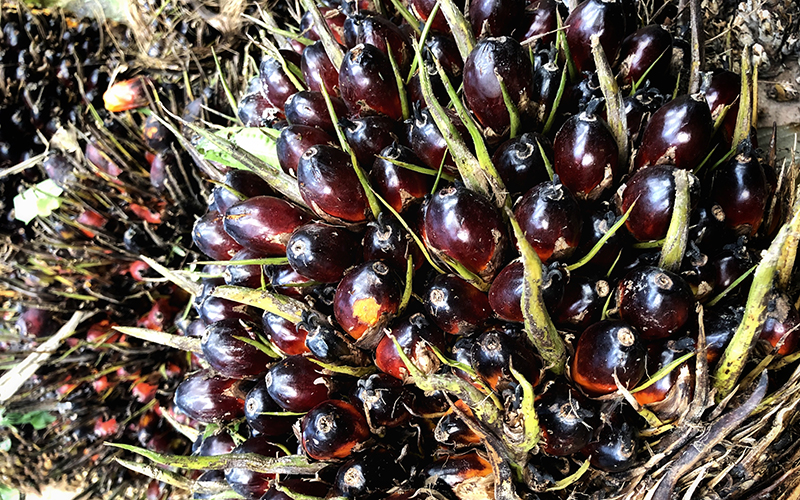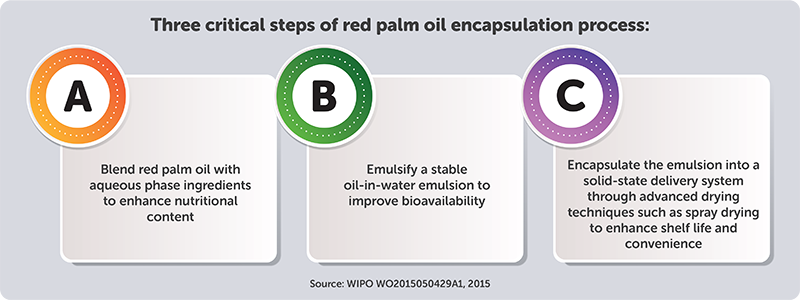Beyond the Basics: Advances in Red Palm Oil for Functional Food and Nutraceuticals
By Dr Nina Naquiah Ahmad Nizar, Assoc. Prof. Dr Eddie Tan Ti Tjih and Nur Alia Aqilah Mohd Rizal
| Authors’ affiliation: Food Technology Department, Faculty of Applied Sciences, Universiti Teknologi MARA, Kuala Pilah Campus, Kuala Pilah, Negeri Sembilan, Malaysia

The inherent characteristics of red palm oil, including its reddish hue and distinct nutty flavour, have limited its adoption among consumers, who typically prefer cooking oils with a mild taste and a clear, light-yellow colour. However, the advancements in food technology began to position red palm oil as a versatile ingredient. One emerging application of red palm oil is in the development of emulsions.

The inherent characteristics of red palm oil, including its reddish hue and distinct nutty flavour, have limited its adoption among consumers, who typically prefer cooking oils with a mild taste and a clear, light-yellow colour. However, the advancements in food technology began to position red palm oil as a versatile ingredient. One emerging application of red palm oil is in the development of emulsions. The utilisation of emulsification technology is a prevalent practice within the food industry, facilitating the creation of a diverse array of emulsified products (Tan and McClements, 2021). These products encompass a broad spectrum of food items, including beverages, milk, creams, dips, sauces, desserts, dressings, mayonnaise, margarine, and butter. The versatility of emulsions stems from their capacity to confer distinct functional attributes upon food products, notably desirable textures, mouthfeel, and flavour profiles (De Oca-Avalus, 2017).
Furthermore, emulsions serve as an effective vehicle for encapsulating and delivering bioactive compounds, such as vitamins and nutraceuticals. This capability not only enhances the nutritional value of food products but also enables more precise control over the release and absorption of these beneficial agents by the human body (Wang et al., 2023).
Wang et al. (2023) and Tan and McClements (2021) have reported various novel strategies for the development of innovative emulsions, including nanoemulsions, high internal phase emulsions (HIPEs), Pickering emulsions, multilayer emulsions, solid lipid nanoparticles (SLNs), multiple emulsions, and emulgels, which are suitable for food applications.
These improvements have opened new avenues for incorporating red palm oil into diverse emulsion-based systems.

Red palm oil has numerous health benefits, and researchers are actively developing innovative products through emulsification.
Application of Red Palm Oil Emulsion
Among them are improved meat gels with plant-based protein and red palm oil as a fat replacer (Zhao et al., 2025; Amalia et al., 2025; Afdhaliah et al., 2024), aerated emulsions with improved nutritional values and desired whipping capabilities (Gao et al., 2023), and chocolate spreads with better emulsion stability (Kumar et al., 2016). The use of red palm oil emulsions in meat gels offers a healthier alternative to traditional fats and enhances the nutritional value due to its high content of carotenes and other bioactive compounds. Furthermore, aerated emulsions and chocolate spreads incorporating red palm oil have demonstrated improved stability and enhanced nutritional profiles, making them ideal for applications that require both functionality and health benefits.
Additionally, efforts have been made to encapsulate the emulsified red palm oil and turn it into a highly usable ingredient. Encapsulation would alleviate the chances of eliminating or reducing the degradation of the phytonutrients within the emulsified red palm oil.

Conclusively, emulsion technology presents a promising approach for incorporating red palm oil into a diverse range of food products, catering to consumer preferences while enhancing nutritional value. Furthermore, encapsulation techniques applied to emulsified red palm oil can help mitigate challenges associated with its colour and flavour, increasing its broader acceptance and utilisation. By leveraging emulsion science, the food industry can contribute to alleviating vitamin A deficiency in society and promoting public health through innovative, nutritious, and palatable products.



